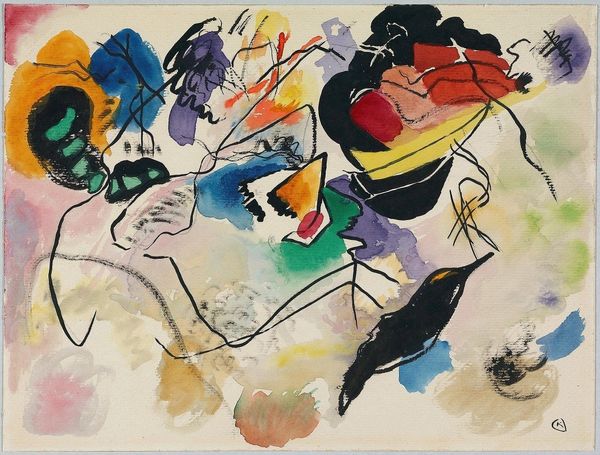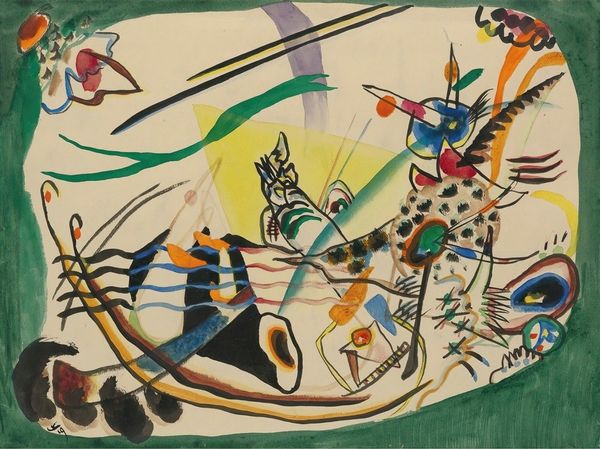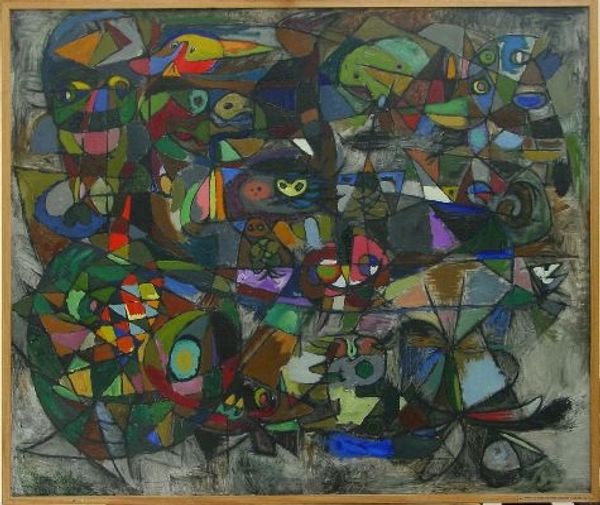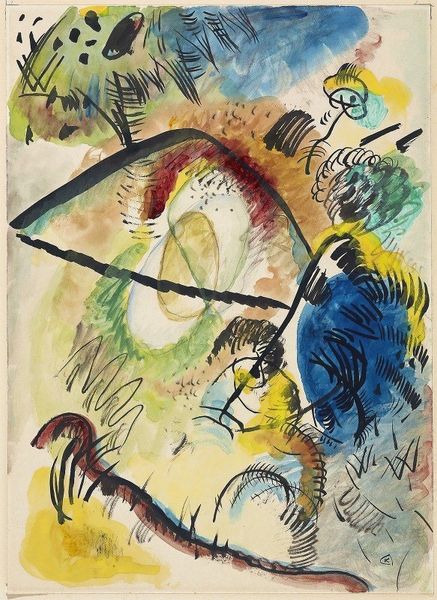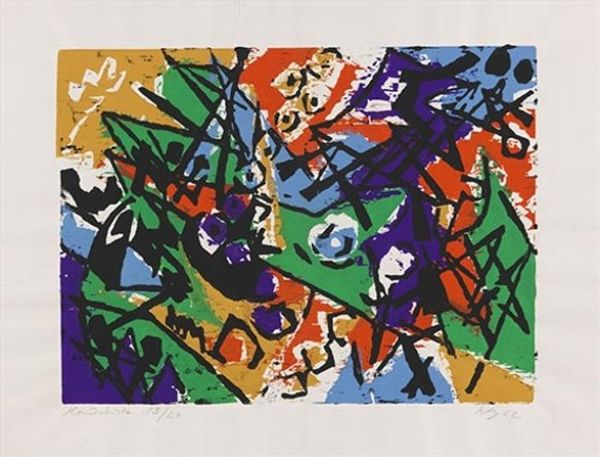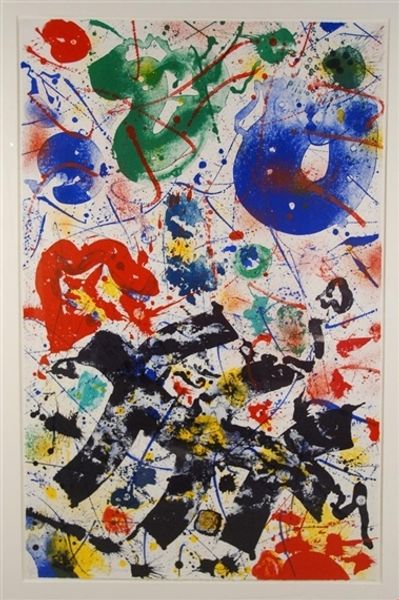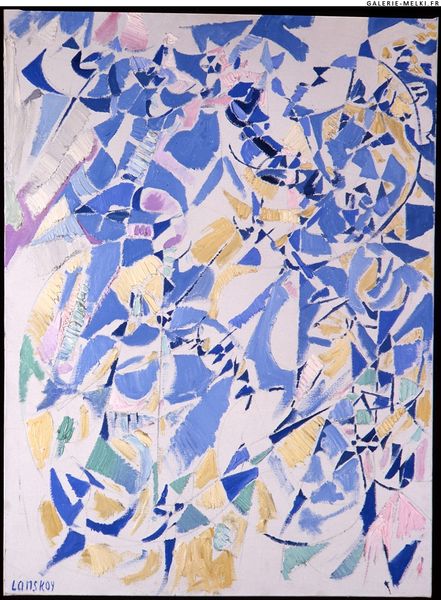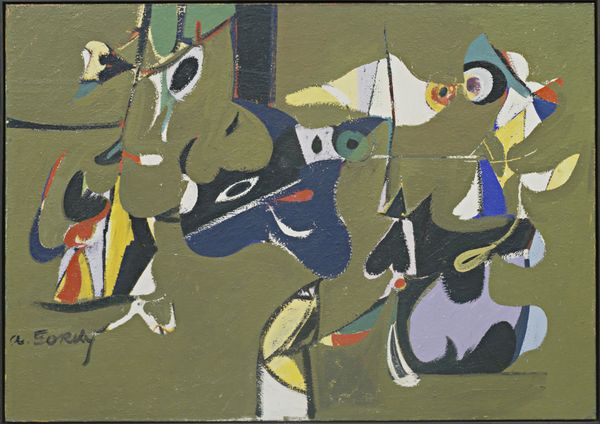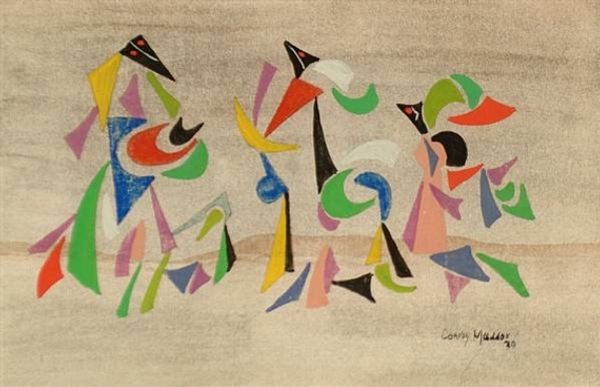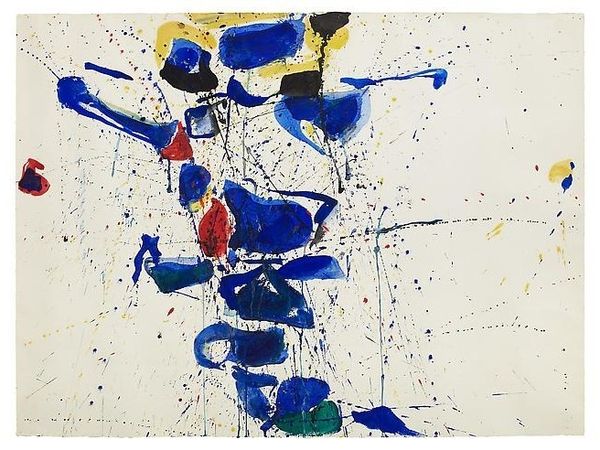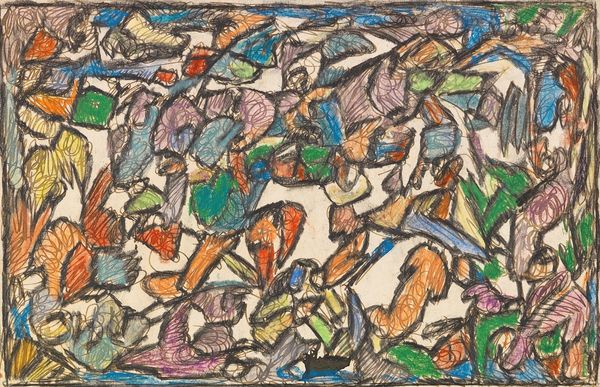
Dimensions: support: 848 x 5550 mm frame: 885 x 5590 x 73 mm
Copyright: © Pollock - Krasner Foundation, Inc. | CC-BY-NC-ND 4.0 DEED, Photo: Tate
Curator: Jackson Pollock's "Summertime: Number 9A" at the Tate presents a vast field of color and tangled lines, creating a dynamic and visually complex experience. Editor: It's overwhelming, isn’t it? Almost chaotic. The scale swallows you whole, and the lines feel aggressive, almost like scratches on the surface. Curator: Indeed. The interplay between the black enamel, the yellows, blues, and the subtle hints of red, creates a fascinating tension. The linear elements weave a complex web, challenging traditional notions of form and space. Editor: I wonder what the public at the time made of this kind of radical gesture. Pollock abandoning easel painting, creating these works on the floor…did it feel like liberation, or an affront to established cultural norms? Curator: His method was certainly revolutionary. Pollock's all-over composition disrupts any focal point, inviting viewers to engage with the painting on its own terms, a pure exploration of line, color, and gesture. Editor: It undoubtedly challenged the museum's role, and its visitors, to reconsider the very definition of art. I still wonder if the cultural shock has dissipated, or if the painting retains its power to provoke. Curator: Regardless, the painting’s structural integrity holds. Editor: And its impact, undeniably felt.
Comments
tate 5 months ago
⋮
http://www.tate.org.uk/art/artworks/pollock-summertime-number-9a-t03977
Join the conversation
Join millions of artists and users on Artera today and experience the ultimate creative platform.
tate 5 months ago
⋮
In 1945, Pollock moved from New York City to Long Island. His studio was a converted barn without heating or lighting. Pollock’s aim to work directly from his unconscious led to a radical process of dripping and pouring paint over large canvases placed flat on the ground. The rhythms in Summertime reflect his belief that ‘The modern artist ... is working and expressing an inner world - in other words expressing the energy, the motion, and other inner forces’. Several commentators have suggested that a frieze of figures lies under the abstract web of paint in this work. Gallery label, November 2005
